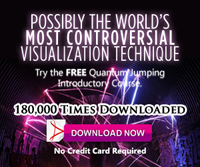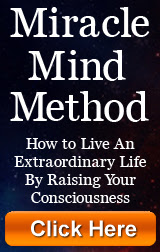The Consciousness Revolution
Graham Hancock, GrahamHancock.com
Waking Times
Here’s the full text of the article Russell Brand kindly invited me to contribute to last week’s issue of the New Statesman. The article, entitled The War on Consciousness, had to be shortened to fit the space available in the magazine, but I reproduce the complete unedited text here.
Consciousness is one of the great mysteries of science – perhaps the greatest mystery. We all know we have it, when we think, when we dream, when we savour tastes and aromas, when we hear a great symphony, when we fall in love, and it is surely the most intimate, the most sapient, the most personal part of ourselves. Yet no one can really claim to have understood and explained it completely. There’s no doubt it’s associated with the brain in some way but the nature of that association is far from clear. In particular how do these three pounds of material stuff inside our skulls allow us to have experiences?
Professor David Chalmers of the Australian National University has dubbed this the “hard problem” of consciousness; but many scientists, particularly those (still in the majority) who are philosophically inclined to believe that all phenomena can be reduced to material interactions, deny that any problem exists. To them it seems self-evident that physical processes within the stuff of the brain produce consciousness rather in the way that a generator produces electricity – i.e. consciousness is an “epiphenomenon” of brain activity. And they see it as equally obvious that there cannot be such things as conscious survival of death or out-of-body experiences since both consciousness and experience are confined to the brain and must die when the brain dies.
Yet other scientists with equally impressive credentials are not so sure and are increasingly willing to consider a very different analogy – namely that the relationship of consciousness to the brain may be less like the relationship of the generator to the electricity it produces and more like the relationship of the TV signal to the TV set. In that case when the TV set is destroyed – dead – the signal still continues. Nothing in the present state of knowledge of neuroscience rules this revolutionary possibility out. True, if you damage certain areas of the brain certain areas of consciousness are compromised, but this does not prove that those areas of the brain generate the relevant areas of consciousness. If you were to damage certain areas of your TV set the picture would deteriorate or vanish but the TV signal would remain intact.
We are, in other words, confronted by at least as much mystery as fact around the subject of consciousness and this being the case we should remember that what seems obvious and self-evident to one generation may not seem at all obvious or self-evident to the next. For hundreds of years it was obvious and self-evident to the greatest human minds that the sun moved around the earth – one need only look to the sky, they said, to see the truth of this proposition. Indeed those who maintained the revolutionary view that the earth moved around the sun faced the Inquisition and death by burning at the stake. Yet as it turned out the revolutionaries were right and orthodoxy was terribly, ridiculously wrong.
 The same may well prove to be true with the mystery of consciousness. Yes, it does seem obvious and self-evident that the brain produces it (the generator analogy), but this is a deduction from incomplete data and categorically NOT yet an established and irrefutable fact. New discoveries may force materialist science to rescind this theory in favour of something more like the TV analogy in which the brain comes to be understood as a transceiver rather than as a generator of consciousness and in which consciousness is recognized as fundamentally “non-local” in nature – perhaps even as one of the basic driving forces of the universe. At the very least we should withhold judgment on this “hard problem” until more evidence is in and view with suspicion those who hold dogmatic and ideological views about the nature of consciousness.
The same may well prove to be true with the mystery of consciousness. Yes, it does seem obvious and self-evident that the brain produces it (the generator analogy), but this is a deduction from incomplete data and categorically NOT yet an established and irrefutable fact. New discoveries may force materialist science to rescind this theory in favour of something more like the TV analogy in which the brain comes to be understood as a transceiver rather than as a generator of consciousness and in which consciousness is recognized as fundamentally “non-local” in nature – perhaps even as one of the basic driving forces of the universe. At the very least we should withhold judgment on this “hard problem” until more evidence is in and view with suspicion those who hold dogmatic and ideological views about the nature of consciousness.
It’s at this point that the whole seemingly academic issue becomes intensely political and current because modern technological society idealises and is monopolistically focused on only one state of consciousness – the alert, problem-solving state of consciousness that makes us efficient producers and consumers of material goods and services. At the same time our society seeks to police and control a wide range of other “altered” states of consciousness on the basis of the unproven proposition that consciousness is generated by the brain.
I refer here to the so-called “war on drugs” which is really better understood as a war on consciousness and which maintains, supposedly in the interests of society, that we as adults do not have the right or maturity to make sovereign decisions about our own consciousness and about the states of consciousness we wish to explore and embrace. This extraordinary imposition on adult cognitive liberty is justified by the idea that our brain activity, disturbed by drugs, will adversely impact our behaviour towards others. Yet anyone who pauses to think seriously for even a moment must realize that we already have adequate laws that govern adverse behaviour towards others and that the real purpose of the “war on drugs” must therefore be to bear down on consciousness itself.
Confirmation that this is so came from the last British Labour government. It declared that its drug policy would be based on scientific evidence yet in 2009 it sacked Professor David Nutt, Chairman of the Advisory Council on the Misuse of Drugs, for stating the simple statistical fact that cannabis is less dangerous (in terms of measured “harms”) than tobacco and alcohol and that ecstasy is less dangerous than horse-riding. Clearly what was at play here were ideological issues of great importance to the powers that be. And this is an ideology that sticks stubbornly in place regardless of changes in the complexion of the government of the day. The present Conservative-Liberal coalition remains just as adamant in its enforcement of the so-called war on drugs as its Labour predecessor, and continues in the name of this “war” to pour public money – our money – into large, armed, drug-enforcement bureaucracies which are entitled to break down our doors at dead of night, invade our homes, ruin our reputations and put us behind bars.
 All of this, we have been persuaded, is in our own interests. Yet if we as adults are not free to make sovereign decisions – right or wrong – about our own consciousness, that most intimate, that most sapient, that most personal part of ourselves, then in what useful sense can we be said to be free at all? And how are we to begin to take real and meaningful responsibility for all the other aspects of our lives when our governments seek to disenfranchise us from this most fundamental of all human rights and responsibilities?
All of this, we have been persuaded, is in our own interests. Yet if we as adults are not free to make sovereign decisions – right or wrong – about our own consciousness, that most intimate, that most sapient, that most personal part of ourselves, then in what useful sense can we be said to be free at all? And how are we to begin to take real and meaningful responsibility for all the other aspects of our lives when our governments seek to disenfranchise us from this most fundamental of all human rights and responsibilities?
In this connection it is interesting to note that our society has no objection to altering consciousness per se. On the contrary many consciousness-altering drugs, such as Prozac, Seroxat, Ritalin and alcohol, are either massively over-prescribed or freely available today, and make huge fortunes for their manufacturers, but remain entirely legal despite causing obvious harms. Could this be because such legal drugs do not alter consciousness in ways that threaten the monopolistic dominance of the alert problem-solving state of consciousness, while a good number of illegal drugs, such as cannabis, LSD, DMT and psilocybin, do?
There is a revolution in the making here, and what is at stake transcends the case for cognitive liberty as an essential and inalienable adult human right. If it turns out that the brain is not a generator but a transceiver of consciousness then we must consider some little-known scientific research that points to a seemingly outlandish possibility, namely that a particular category of illegal drugs, the hallucinogens such as LSD, DMT and psilocybin, may alter the receiver wavelength of the brain and allow us to gain contact with intelligent non-material entities, “light beings”, “spirits”, “machine elves” (as Terence McKenna called them) – perhaps even the inhabitants of other dimensions. This possibility is regarded as plain fact by shamans in hunter-gatherer societies who for thousands of years have made use of visionary plants and fungi to enter and interact with what they construe as the “spirit world”. Intriguingly it was also specifically envisaged by Dr Rick Strassman, Professor of Psychiatry at the University of New Mexico, following his ground-breaking research with human volunteers and DMT carried out in the 1990’s – a project that produced findings with shattering implications for our understanding of the nature of reality. For further information on Strassman’s revolutionary work see his book DMT: The Spirit Molecule.
~~ Help Waking Times to raise the vibration by sharing this article with the buttons below…